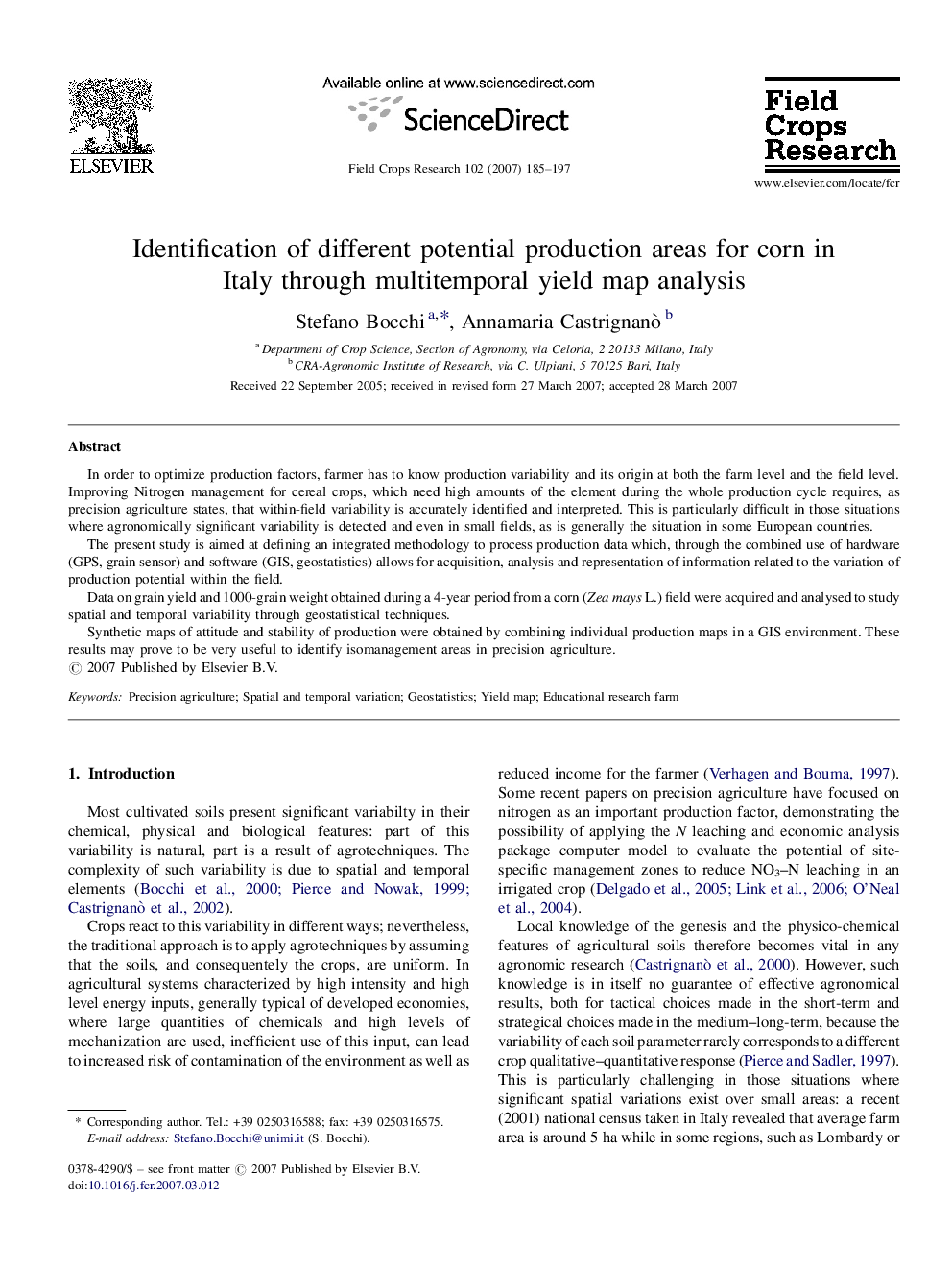| Article ID | Journal | Published Year | Pages | File Type |
|---|---|---|---|---|
| 4511606 | Field Crops Research | 2007 | 13 Pages |
In order to optimize production factors, farmer has to know production variability and its origin at both the farm level and the field level. Improving Nitrogen management for cereal crops, which need high amounts of the element during the whole production cycle requires, as precision agriculture states, that within-field variability is accurately identified and interpreted. This is particularly difficult in those situations where agronomically significant variability is detected and even in small fields, as is generally the situation in some European countries.The present study is aimed at defining an integrated methodology to process production data which, through the combined use of hardware (GPS, grain sensor) and software (GIS, geostatistics) allows for acquisition, analysis and representation of information related to the variation of production potential within the field.Data on grain yield and 1000-grain weight obtained during a 4-year period from a corn (Zea mays L.) field were acquired and analysed to study spatial and temporal variability through geostatistical techniques.Synthetic maps of attitude and stability of production were obtained by combining individual production maps in a GIS environment. These results may prove to be very useful to identify isomanagement areas in precision agriculture.
